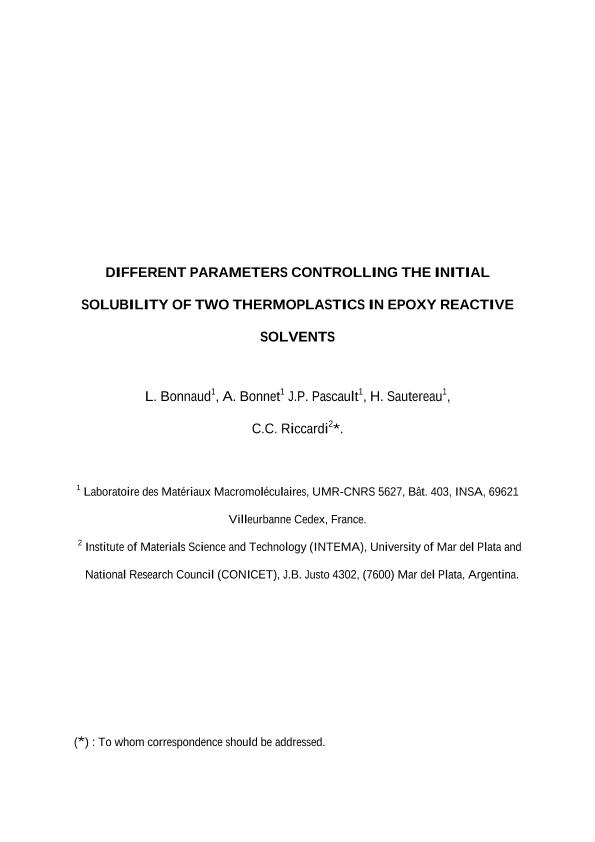Artículo
Different parameters controlling the initial solubility of two thermoplastics in epoxy reactive solvents
Fecha de publicación:
02/2002
Editorial:
John Wiley & Sons Inc
Revista:
Journal of Applied Polymer Science
ISSN:
0021-8995
Idioma:
Inglés
Tipo de recurso:
Artículo publicado
Clasificación temática:
Resumen
The influence of different factors on the miscibility of diglycidyl ether of bisphenol A (DGEBA)/thermoplastic blends was studied. DGEBA/poly(ether imide) (PEI) blends exhibited upper critical solution temperature behavior. The addition of a trifunctional epoxy [triglycidyl para-amino phenol (TGpAP)] increased the miscibility window. The addition of diamines as hardeners could also increase [4,4′-methylene-bis(3-chloro-2,6-diethylaniline) (MCDEA)] or decrease (4,4′-diaminodiphenylsulfone) the miscibility window. DGEBA/poly(ether sulfone) (PES) blends showed lower critical solution temperature behavior. The addition of TGpAP had an effect similar to that for PEI blends, but the presence of MCDEA as a hardener decreased the miscibility of epoxy/PES blends. The modeling of the cloud-point curves was performed with the Flory-Huggins equation (Flory, P. J. Principles of Polymer Chemistry; Cornell University Press: Ithaca, NY, 1953; p 672) according to the procedure developed by K. Kamide, S. Matsuada, and H. Shirataki (Eur Polym J 1990, 26, 379), with the interaction parameter used as the fitting parameter. A phenomenological model that takes into account the molar mass of DGEBA and the amount of TGpAP is proposed and is found to predict the cloud-point temperature of any TGpAP/DGEBA/PEI blend.
Archivos asociados
Licencia
Identificadores
Colecciones
Articulos(INTEMA)
Articulos de INST.DE INV.EN CIENCIA Y TECNOL.MATERIALES (I)
Articulos de INST.DE INV.EN CIENCIA Y TECNOL.MATERIALES (I)
Citación
Sautereau, H.; Pascault, J. P.; Bonnet, A.; Bonnaud, L.; Riccardi, Carmen Cristina; Different parameters controlling the initial solubility of two thermoplastics in epoxy reactive solvents; John Wiley & Sons Inc; Journal of Applied Polymer Science; 83; 6; 2-2002; 1385-1396
Compartir
Altmétricas




